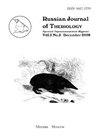Large mammal fauna of the West Siberian forest-tundra zone in the late Holocene
IF 0.6
4区 生物学
Q4 ZOOLOGY
引用次数: 1
Abstract
Changes in the Late Holocene species composition and dynamics of number of large mammal fauna are described for the forest-tundra zone of the West Siberia. The review is based on 14C dated materials from cave and archeological sites. During the studied period the species composition of large mammals was nearly constant and similar to the modern one with azonal species dominating in the fauna. The faunal composition of the southern part of forest-tundra zone differed from the northern part by the presence of the beaver and otter. Minor changes in the faunal composition took place only in the northern part of this area at the end of the Subatlantic period and concerned changes in the northern boundary of the sable range. It was controlled by the shift of northern forest boundary and the increased human activities. People completely exterminated beavers and sables in the region by the mid 18th century. The mountain hare, polar fox, and reindeer had persistently high numbers during the Late Holocene in the forest-tundra zone. The numbers of other species were low. The modern mammal species composition of the forest-tundra zone was formed by the interplay of climatic change and commercial activity of people. How to cite this article: Bachura O.P., Kosintsev P.A. Lobanova T.V. 2019. Large mammal fauna of the West Siberian forest-tundra zone in the late Holocene // Russian J. Theriol. Vol.18. No.1. P.43–50. doi: 10.15298/ rusjtheriol.18.1.05.全新世晚期西伯利亚西部森林-冻土带的大型哺乳动物区系
描述了西西伯利亚森林苔原带晚全新世物种组成和大型哺乳动物动物群数量动态的变化。该综述基于洞穴和考古遗址的14C年代材料。在研究期间,大型哺乳动物的物种组成几乎不变,与现代哺乳动物相似,动物群中以无氮物种为主。森林苔原带南部的动物群组成与北部的不同之处在于海狸和水獭的存在。在次大西洋期结束时,该地区的北部仅发生了动物群组成的微小变化,并涉及紫貂山脉北部边界的变化。它受到北方森林边界转移和人类活动增加的控制。到18世纪中期,该地区的人们彻底灭绝了海狸和军刀。在全新世晚期的森林苔原地带,山兔、北极狐和驯鹿的数量一直居高不下。其他物种的数量很少。森林苔原地带的现代哺乳动物物种组成是由气候变化和人类商业活动的相互作用形成的。如何引用这篇文章:Bachura O.P.,Kosintsev P.A.Lobanova T.V.2019。全新世晚期西西伯利亚森林苔原带的大型哺乳动物区系//俄罗斯J.Theriol。第18卷第1期。P.43–50.doi:10.15298/rusjtheriol.8.1.05。
本文章由计算机程序翻译,如有差异,请以英文原文为准。
求助全文
约1分钟内获得全文
求助全文
来源期刊

Russian Journal of Theriology
Agricultural and Biological Sciences-Animal Science and Zoology
CiteScore
0.90
自引率
33.30%
发文量
0
期刊介绍:
The Russian Journal of Theriology publishes papers on all aspects of mammalian biology: taxonomy, zoogeography, ecology, behavior, morphology, development, physiology, paleontology, and evolution. Studies of extinct as well as extant taxa are included. Reviews are also published; these may be invited by the Editorial Board.
 求助内容:
求助内容: 应助结果提醒方式:
应助结果提醒方式:


